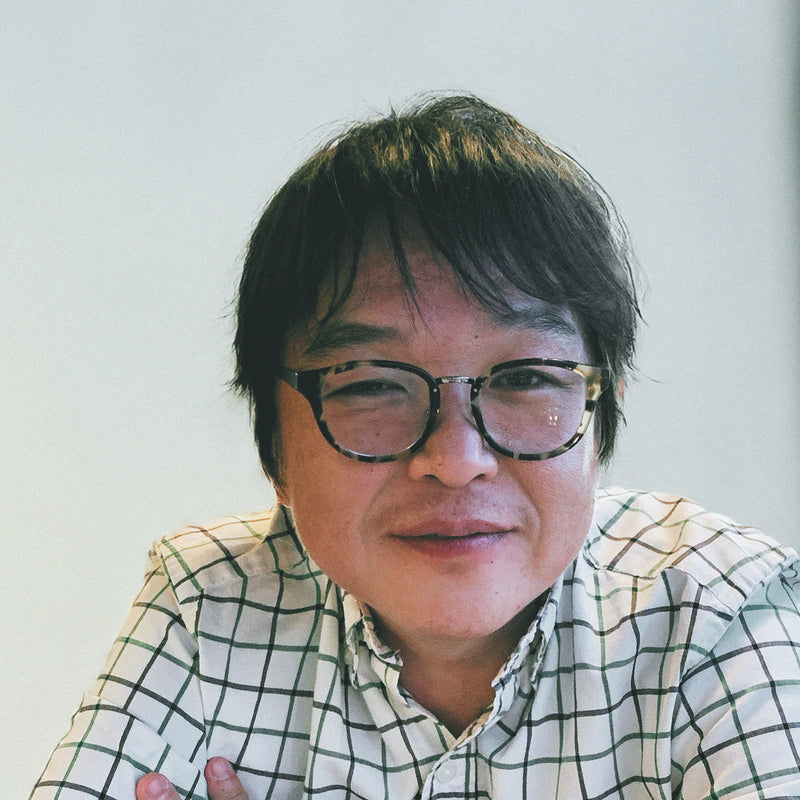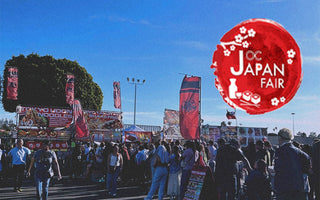Japanese Green Tea Company held a booth at the Northwest Tea Festival 2019 in Seattle from September 28-29, 2019.
This is the second year for this event. Here are some of the pictures from the 2018 fair and my personal thoughts from my first-time experience of this type of event so that you can see what it was like at the fair and read about my thoughts and all the lessons I learned from this event.
Participating in the festival again gave us a unique chance to reflect on how much we've grown — not just as a company, but also in how we connect with our customers. The conversations we had in 2018 helped shape the way we designed our booth, presented our teas, and prepared for crowd engagement in 2019. It was a full-circle moment, where we could apply all that we had learned the year before and offer an even more enriching experience to both new and returning tea lovers.
Last Year's Experience
Last year was our first consumer-related fair experience. We were very overwhelmed with all the tea lovers who came to the fair, but at the same time, we were very excited to meet and hear what people had to say about our products. Thanks to all the help from everyone involved, the fair was a very successful event for us.
What stood out the most was the genuine curiosity people had about Japanese green tea—its origins, its health benefits, and even how to brew it properly. Many attendees had never tasted authentic Japanese tea before, and watching their reactions as they sampled our brews for the first time was both humbling and rewarding. These interactions reminded us why we do what we do, and they gave us renewed energy to continue sharing the tradition and richness of Japanese tea culture with a wider audience.
Pictures from the 2018 Fair
We have spent a lot of time and effort making a good presentation. I think that the idea of having actual lemons and mikan made the booth look a lot brighter.
One of the most commonly asked questions from the World Tea Expo, which we had earlier in Las Vegas was...
"What is Mikan?"
The answer is: Mikan is a Japanese orange, whose English name is Citrus Unshu.

Mikan is also called satsuma mandarin.
I wished I could show the actual Mikan at the booth, but I couldn't get one in the middle of the desert in Las Vegas. So this time, I bought it specifically to show at the booth.
 Japanese Green Tea with Mikan sold out first
Japanese Green Tea with Mikan sold out first
This time, with the actual Mikan around the product display, Japanese Green Tea with Mikan sold out first. (If you are interested, it is available online here.)
Visitors frequently paused to admire the colorful citrus display, often leaning in to catch the fragrance of the fresh mikan. It created a sensory connection that went beyond taste — they could see, smell, and even touch a part of what made the tea unique. That simple addition sparked conversations, invited curiosity, and made our booth feel more authentic and welcoming. It was a great reminder that small, thoughtful touches can make a big impact.
Preparing for the Booth
Preparation for the booth was a lot easier than at the Las Vegas World Tea Expo.
The simple reason why it was easier is that we drove to Seattle!
One of the hardest logistics of participating in this kind of event is getting things to the booth. For the Las Vegas show, I had a very hard time figuring out what to ship, what to bring, and what to order to be delivered at the booth.
This time, we just packed everything in the car! Easy. : )
We wanted to make sure that the water was of good quality before giving away the sample, so we decided to bring the entire water cooler with us. Being able to drive gave us so much more freedom — not just in what we brought, but in how we prepared mentally. Without the pressure of coordinating shipments or relying on event deliveries, we had more time to focus on presentation, fine details, and even last-minute creative ideas. The relaxed setup process allowed us to enjoy the calm before the crowd and reflect on how far we’d come since our first booth experience.
Here are pictures of the empty floor while setting up.
 The day before the fair, the floor looks empty.
The day before the fair, the floor looks empty.
 It looks so different when the preparation is going on.
It looks so different when the preparation is going on.
In the Morning
The show floor starts at 10 a.m.; we got to the fair about an hour earlier to get ready. People were already lining up for the fair. Wow.
 Many people lining up to get into the Northwest Tea Festival
Many people lining up to get into the Northwest Tea Festival

We just encountered the stuff bringing up the famous Northwest Tea Festival Tea Pot sign!
There was a buzz of quiet excitement in the air as vendors rolled in carts, unpacked boxes, and exchanged cheerful greetings. Watching the iconic teapot sign being set up felt like the official signal that everything was about to begin. Despite the early hour, attendees outside looked energized and eager — their presence reminded us how passionate the tea community truly is. It gave us a final boost of motivation to make our booth experience truly memorable.
The Show Starts!
Here is how the show floor looked after the show opened. (See how different it is from the empty floor above before opening.) There are so many people that it is even hard to move around the booth.

Northwest Tea Festival - the floor is packed with people
Here are some more pictures of our booth. Thank you so much for everyone stopping by! I wish we had more time to chat, but we were so busy preparing samples for everyone.
 We were lucky to be situated in a corner booth, so we could show more products on the side.
We were lucky to be situated in a corner booth, so we could show more products on the side.

Our Nozomi - Covered Green Tea was very popular at Fair
(Here is a link to the product)

Our Gyokuro was also popular and sold out quickly. We should have brought more with us. (Here is a link to the product)

Here is a picture of me at the booth. : )
Overall, it was a super fun and exciting event. Thank you very much for everyone who came to the booth.
From the moment the doors opened, the energy was electric. Visitors streamed in with smiles and questions, and before we knew it, our booth was surrounded by curious tea lovers eager to sample and learn more. We had conversations about brewing techniques, health benefits, and the subtle differences between tea varieties. It was heartwarming to see returning faces from last year alongside first-time visitors, all sharing the same enthusiasm for Japanese green tea. Moments like these make all the preparation worthwhile.
I look forward to keeping in touch and being connected with you all. Thank you!
Conclusion
Attending the Northwest Tea Festival was not just a chance to showcase our teas — it was an opportunity to connect with a vibrant community that shares our passion for authenticity, tradition, and flavor. From heartfelt conversations to the joy of seeing familiar faces return, every moment reminded us why we do what we do. We’re deeply grateful to everyone who stopped by, supported us, and shared in the experience. We look forward to many more cups of tea — and memories — together in the years to come.
Get Free Bonus Books

Sign up for free to the Green Tea Club to get advice and exclusive articles about how to choose Japanese Tea, and tips, tricks, and recipes for enjoying Japanese tea.
About the author
Kei Nishida
Author, CEO Dream of Japan
Certification: PMP, BS in Computer Science
Education: Western Washington University
Kei Nishida is a passionate Japanese green tea connoisseur, writer, and the founder and CEO of Japanese Green Tea Co., a Dream of Japan Company.
Driven by a deep desire to share the rich flavors of his homeland, he established the only company that sources premium tea grown in nutrient-rich sugarcane soil—earning multiple Global Tea Champion awards.
Expanding his mission of introducing Japan’s finest to the world, Kei pioneered the launch of the first-ever Sumiyaki charcoal-roasted coffee through Japanese Coffee Co. He also brought the artistry of traditional Japanese craftsmanship to the global market by making katana-style handmade knives—crafted by a renowned katana maker—available outside Japan for the first time through Japanese Knife Co.
Kei’s journey continues as he uncovers and shares Japan’s hidden treasures with the world.
Learn more about Kei



